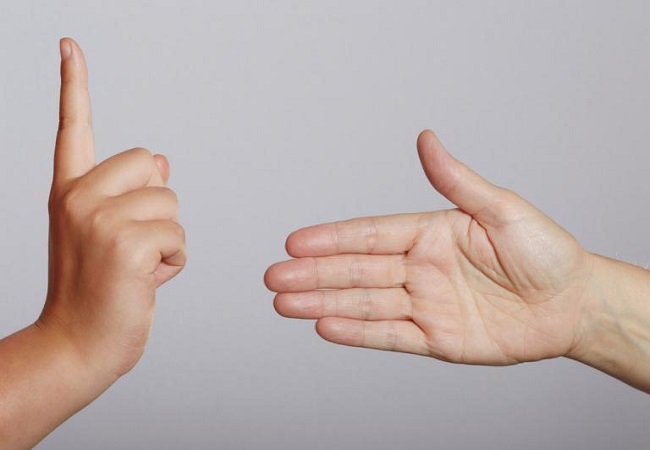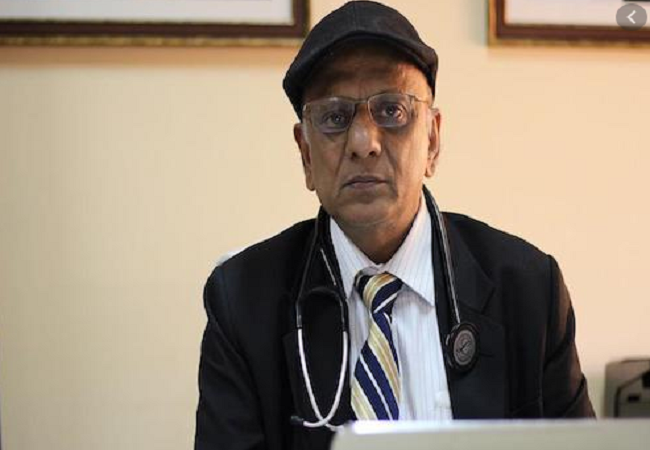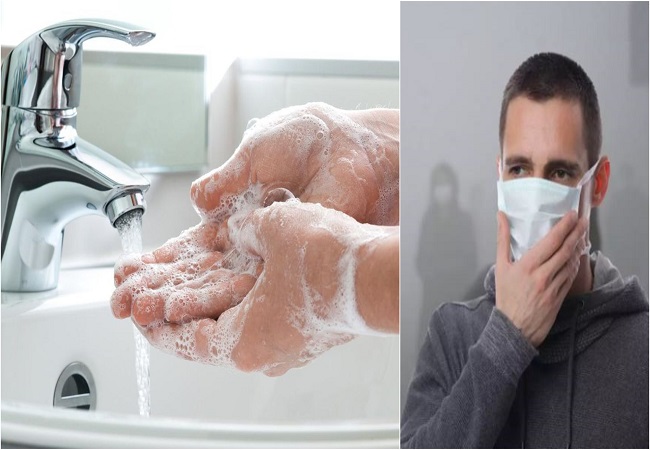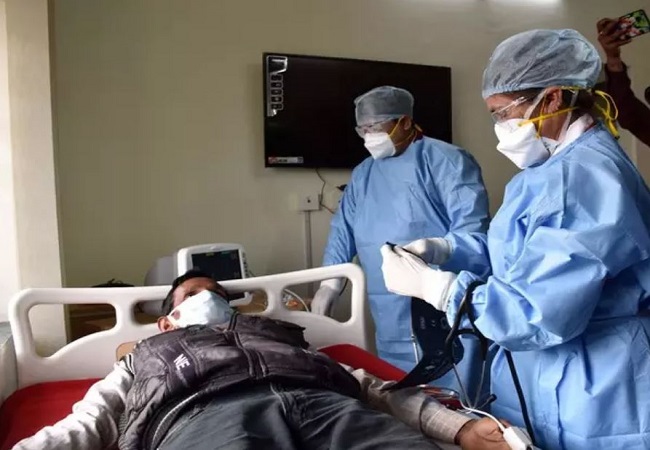




— By Dr KK Aggarwal
17th March: CMAAO COVID 19 PANDEMIC

India
States: 14,
Total cases 11 4 (MOH), 129 World Meters
Serious: Zero, Death: 2, Community spread: zero; Super spreader: Zero; Men more than women.
ICMR: Testing across 52 labs (ICMR-National Institute of Virology, Pune is the apex laboratory for reconfirmation of any positive samples); additionally, 57 other labs to help sample collection
Countries 162 , Continents all except Antarctica
Cases 175982 Cases (5% extra if CT diagnosis is taken)
Deaths 6717
Recovered: 77871
Currently infected:91394
Mild: 85416 (93%)
Serious 5978 (7%)
Likely deaths (6717 + 5978 x 15 = 888 ) = 7613
Likely deaths in Italy: > 2060
Deaths in over 46 Countries
More than 50% of cases outside China

COVID Sutras
Public health emergency of international concern declared within a month after the first reported cases, as a result of the signs of human-to-human transmission outside China (30th January)
Global risk raised to the highest level of alert (28th February)
10th March: A near uneven controllable pandemic
Disease: Coronavirus disease or COVID-19
Virus: SARS-CoV-2 virus (names used when communicating with the public “the virus responsible for COVID-19” or “the COVID-19 virus”)
Symptoms: fever, tiredness, and dry cough (most common); only cough (pollution), cough and cold (allergy), fever with sore throat in children (streptococcal), fever above 100.4 with cough and cold
(flu), fever with cough and breathlessness (corona like illness), cough > 2 weeks rule out TB
No fever no flu no corona; No breathlessness no seriousness, no breathlessness no oxygen requirement no seriousness
Corona Namaste better than elbow touch

Hygiene: Maintain social distance 1 meter from a person with cough and cold; wash hands (Remember the mnemonic SUMAN K – seedha ulta mutthi anghuta nakhun kalai) with soap and water or 70% alcohol sanitizer, disinfect surfaces, use surgical masks, if infected (symptoms especially coughing or looking after someone who may have COVID-19.
All doctors: to carry SPO2 monitor to detect early serious cases
Suspect a corona case: Fever or signs/symptoms of lower respiratory illness (cough or shortness of breath) AND any person, including health care workers who has had close contact with a lab confirmed COVID-19 patient within 14 days of symptom onset.
Confirmed case: Lab confirmed irrespective of clinical signs and symptoms.
Epidemic cycle: First case, first cluster, first community spread
Epidemic cycle: Contain, Delay, Research and Mitigate
What to do: If you have fever with dry cough with or without breathlessness self- isolate (quarantine yourself at home), wear surgical mask, do frequent hand wash and call your doctor.
Isolate all infected patients. They need to wear surgical mask.
Isolate (quarantine) at home all close contacts, call them twice daily, counsel them, no testing if no symptoms, test if symptoms develop.
Avoid cohort (clusters) of asymptomatic close contacts without masks (Diamond Princess: 696 in cohort ended with 23% getting the infection and 7 deaths, 32 still serious)
Treatment: Avoid self-medication; start Tamiflu when symptoms appear and stop if COVID 19 is negative.
CDC: Any American can be tested, no restrictions, subject to doctor’s orders
It’s not flu: It’s a lung disease, not a stuffy nose disease. Clinically all have fever, 75% have cough; 50% weakness; 50% breathlessness with low total white count and deranged liver enzymes; runny nose only shows up in 4% cases; 20% need ICU care and 15% of them are fatal. Treatment is symptomatic though anti-viral (remdesivir) and anti-HIV drugs (lopinavir/ritonavir) have shown some efficacy.
Retirees had the highest case fatality rate at 5.1%.
Mild means a positive test, fever, shortness of breath, and possibly even pneumonia, but not so bad that you need to be hospitalized or needs oxygen.
Severe: Once you need oxygen, then you move into the severe category.
Color Coding by China: Red code: Remain in quarantine for 14 days; Yellow code: Stay indoors for 7 days; Green code: Free to move about as they please.
Avoid mass gatherings: > 1000 people, in smaller gathering first ask “I hope no one is here with fever and cough, if kindly leave or wear surgical mask”
Travel
Dos: hand washing, avoid sick people, avoid touching eyes, nose and mouth with unwashed hands, cover nose and mouth with tissue when coughing or sneezing.
Don’ts: Avoid close contact if cough and fever, do not touch eyes, nose and mouth, avoid spitting in public
COVID 19
Possibly behaves like SARS, but more contagious and less lethal
Near pandemic, PHEIC
Respiratory virus not a GI virus
56% are males
Deaths rate males 2.8% females 1.7%
Causes mild illness in 82%
Severe illness in 15%
Critical illness in 3%
Death 3.4 % (March 3)
Deaths: 15% serious cases
Deaths 71% with comorbidity
71% deaths are in patients with comorbidity due to cytokine storm. [72,314 Chinese cases, largest patient-based study, JAMA)
CAD patients most at risk [CAD 10.5%, Diabetes 7.3%, COPD 6.3%, HT 6%, Cancer 5.6%, no pre-existing disease (0.9%)
Health care provider infections China 3.8% 0.3% deaths. Singapore Nil
Deaths 10% in Iran (under reporting)
Doing S Korea (0.6%) doing more tests in mild cases
Affects all sexes but predominately males 56%
Age; 87% (30-79), 10% (< 20), 3% (> 80)
Mean time to symptoms 5 days
Mean time to pneumonia 9 days
Mean time to death 14 days
Mean time to CT changes 4 days
3-4 reproductive number R0 (flu 1.2, SARS 2)
Epidemic doubling time 7.5 days
Doubling time in Korea 1 day probably due to super spreader
Tripling time in Korea 3 days
Positivity rate% (UK 0.2, Italy 5, France 2.2, Austria 0.6, USA 3.1)
Origin: Probably from bats (mammal; central hosts), snakes and pangolins (intermediate hosts); possible animal sources of COVID-19 not yet been confirmed
Spread: Large droplets
Spread: Predominately from people having LRTI
Precautions: Standard droplet for the public and close contacts; air borne for healthcare workers dealing with secretions.
Incubation period days 2-14 days
Mean Incubation period: 5.2 days
Recover time Mild cases 2 weeks
Recovery time sever cases 4-6 weeks
Case fatality 80 + 14.8%
Case fatality 70-79 = 8%
Case fatality 60-69 = 3.6%
Case Fatality 50-59 = 1.3%
Case fatality 40-49 – 0.4%
Case fatality 10-39: 0.2%
Case fatality < 9 years: nil
What is the case fatality of other viruses?
MERS 34% (2012, killed 858 people out of the 2,494 infected)
SARS 10% (Nov. 2002 – Jul. 2003, originated from Beijing, spread to 41 countries, with 8,096 people infected and 774 deaths).
Ebola 50%
Smallpox 30-40%
Measles 10-15% developing countries
Polio 2-5% children and 15-30% adults
Diphtheria 5-10%
Whooping cough 4% infants < 1yr, 1% children < 4 years
Swine flu < 0.1-4 %
Seasonal flu 0.01%
Number of flu deaths every year: 290,000 to 650,000 (795 to 1,781 deaths per day)
Spread
Treatments
((The writer is President, CMAAO, HCFI and Past national President IMA))